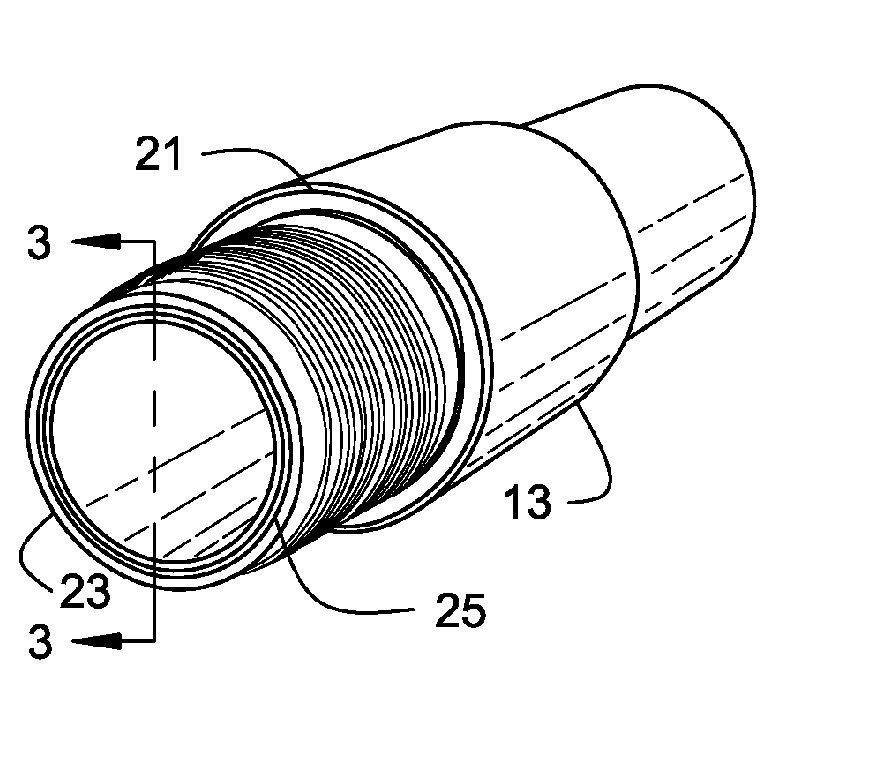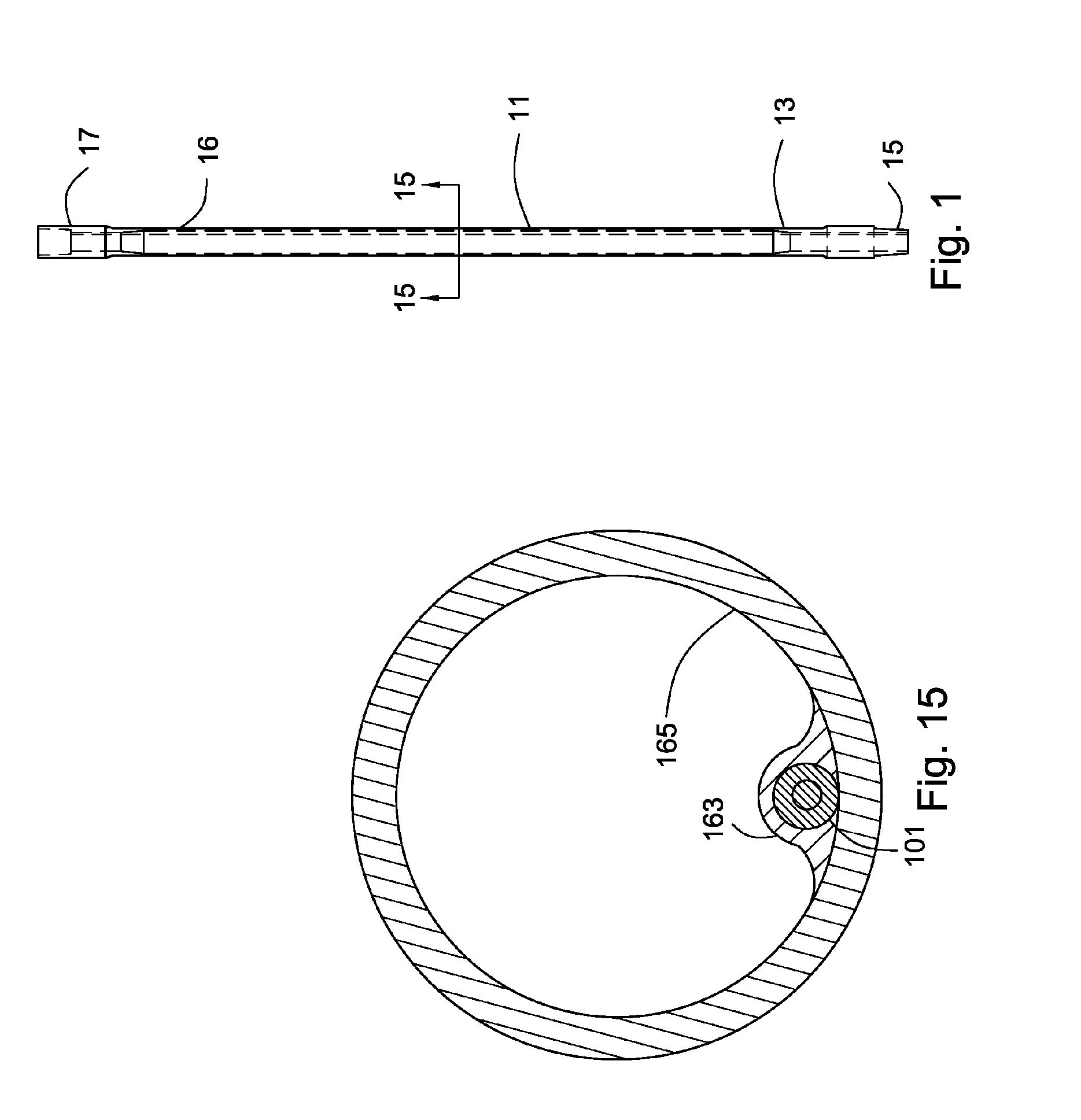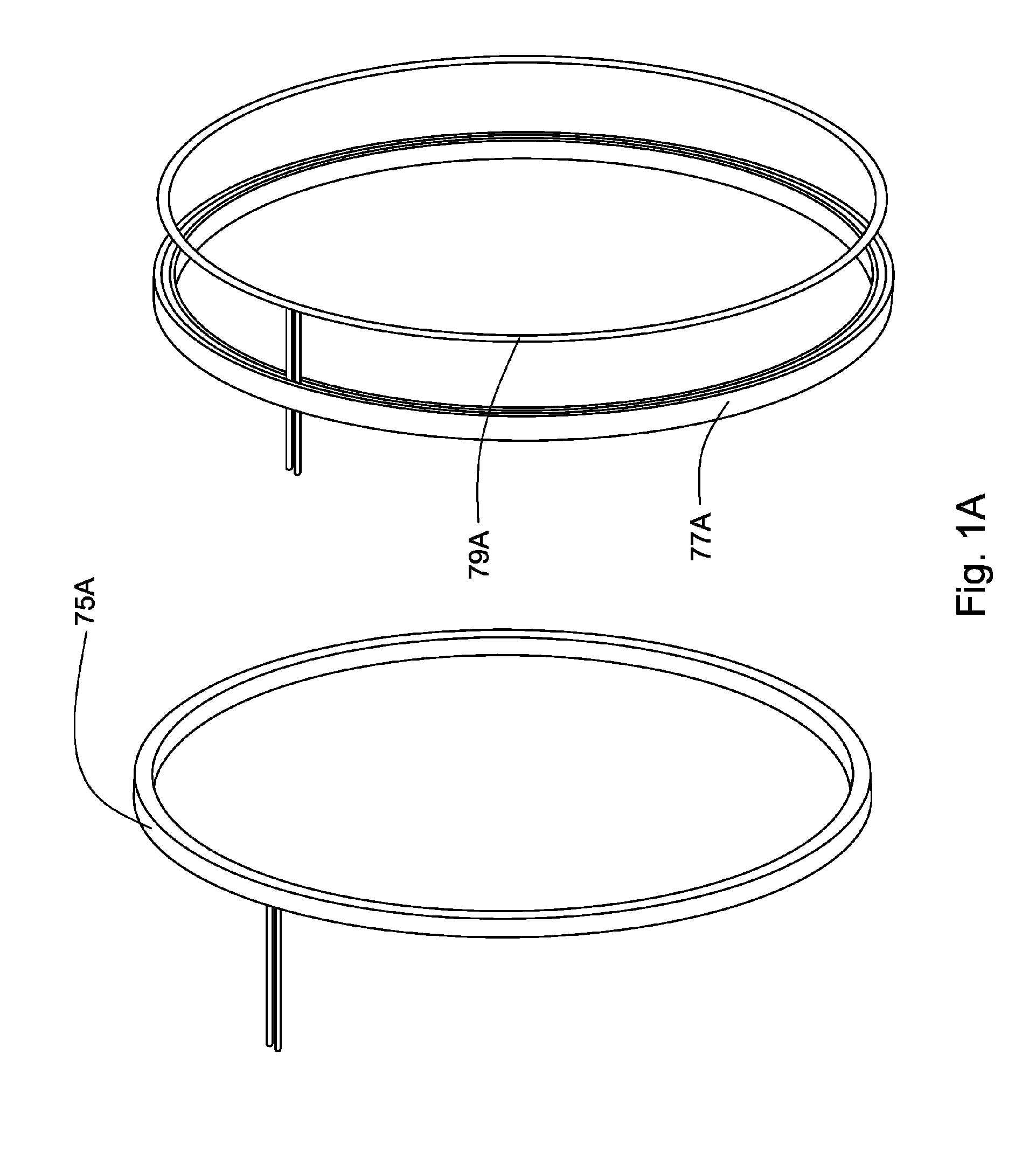Downhole data transmission system
- Summary
- Abstract
- Description
- Claims
- Application Information
AI Technical Summary
Benefits of technology
Problems solved by technology
Method used
Image
Examples
Embodiment Construction
[0118] The following examples are provided by way of illustration and explanation and as such are not to be viewed as limiting the scope of the present invention.
[0119] Bench Test. Bench tests simulating connected pipe joints were conducted. The tests incorporated 30 sets of inductively coupled joints incorporating flexible segmented ferrite MCEI units in steel rings with recesses machined therein, each set being joined together in series by 34 feet of coaxial cable. The coupler consisted of 0.25-inch long by 0.100-inch diameter ferrite cylinders of permeability 125, having an inside diameter of about 0.05 inches, which were ground in half parallel to the cylindrical axis after infiltration with epoxy, bonding to a nylon chord substrate, and bonding into the groove in the steel. This simulated joint was used to characterize system transmission. A 2-volt peak-to-peak sinusoidal signal from a single 50-ohm, 2.5-mW power source energized the coupler of the first joint and produced a 22...
PUM
 Login to View More
Login to View More Abstract
Description
Claims
Application Information
 Login to View More
Login to View More - R&D
- Intellectual Property
- Life Sciences
- Materials
- Tech Scout
- Unparalleled Data Quality
- Higher Quality Content
- 60% Fewer Hallucinations
Browse by: Latest US Patents, China's latest patents, Technical Efficacy Thesaurus, Application Domain, Technology Topic, Popular Technical Reports.
© 2025 PatSnap. All rights reserved.Legal|Privacy policy|Modern Slavery Act Transparency Statement|Sitemap|About US| Contact US: help@patsnap.com



